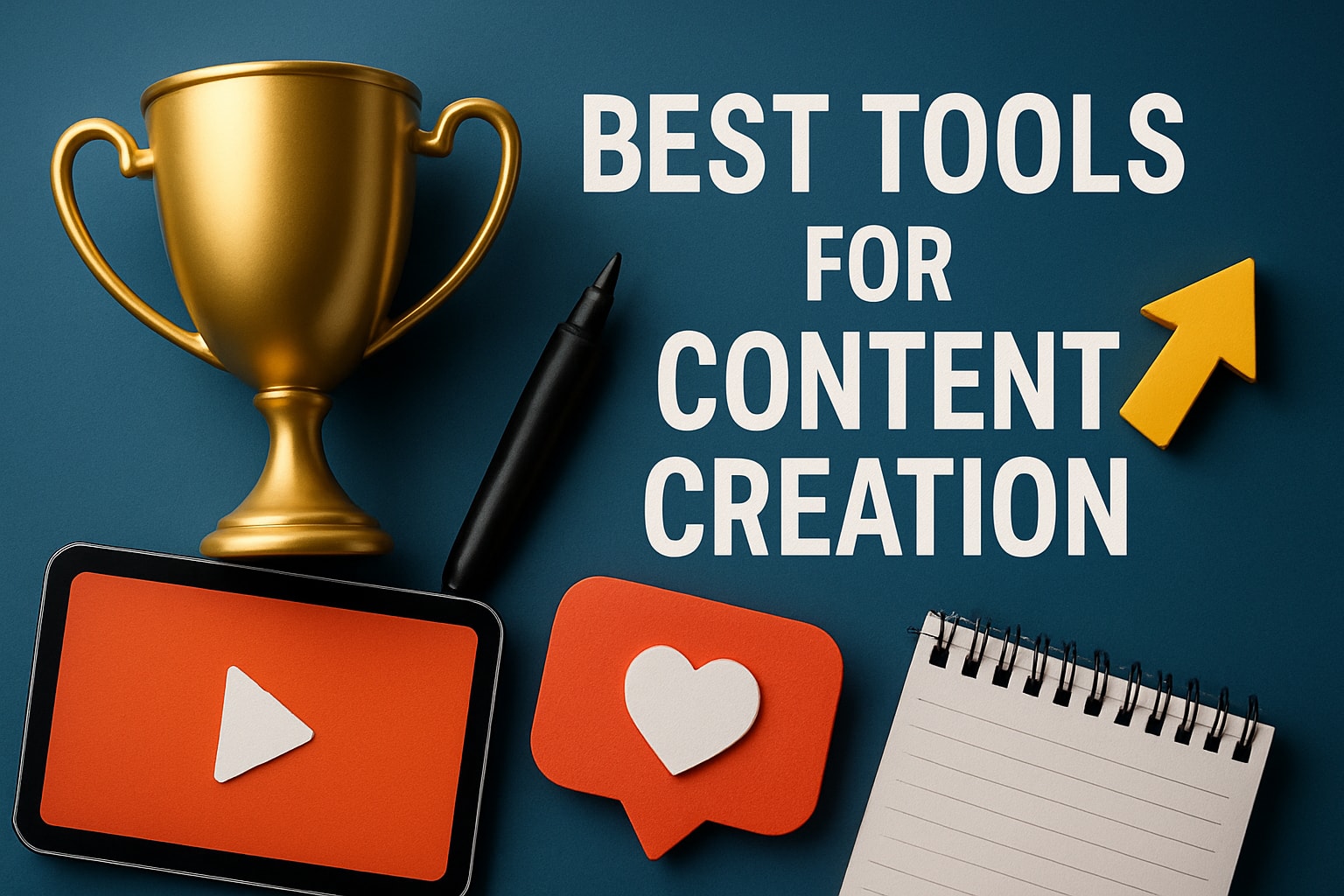Stories have a unique power to turn ordinary brands into unforgettable movements. In today’s crowded digital world, agency storytelling is the secret weapon that transforms casual audiences into lifelong fans.
By mastering agency storytelling, you can elevate your brand, forge deeper connections, and see real results. This article will reveal seven proven storytelling techniques top agencies use to boost visibility, build authenticity, and drive engagement.
Ready to see your brand story come to life? Dive in to discover how agency storytelling can help your brand stand out, inspire loyalty, and create lasting impact.
The Strategic Value of Storytelling for Agencies
Storytelling is the heartbeat of every memorable brand. In the agency world, it is much more than clever content or flashy visuals. Agency storytelling shapes how an audience feels, remembers, and connects with a brand, turning fleeting impressions into lasting relationships.
Imagine agency storytelling as the invisible thread weaving together every touchpoint, message, and campaign. It is not just what you say, but how you make people feel. Instead of dry facts, agencies craft rich experiences that invite audiences into a brand’s story, making them characters rather than just consumers.

Why Storytelling is the Foundation of Branding
At the core of every successful brand lies trust. According to the 2025 Edelman Trust Barometer, 81% of consumers say they must trust a brand before making a purchase. This is where agency storytelling becomes indispensable. Through authentic stories, agencies build credibility, foster loyalty, and make brands relatable in a noisy market.
Stories evoke emotion, spark curiosity, and help brands stand out. Rather than pushing products, agency storytelling pulls people in, sharing the “why” behind every campaign. This deeper connection is what transforms casual audiences into loyal fans.
The Psychology Behind Memorable Stories
Why do people remember stories long after they forget statistics? Neuroscience reveals that storytelling activates empathy and multiple areas of the brain. When an agency tells a compelling story, it triggers emotional engagement and creates stronger memories.
Think of it like planting seeds in the audience’s imagination. Facts may inform, but stories inspire action. Agency storytelling leverages this psychological power, making brands unforgettable and sparking conversations that ripple far beyond a single ad or post.
Differentiation in a Crowded Marketplace
With countless brands competing for attention, agency storytelling is a powerful tool for differentiation. Agencies like Ogilvy and R/GA have mastered the art of narrative-driven campaigns. For instance, Ogilvy’s work for Dove’s Real Beauty campaign challenged stereotypes and built emotional resonance, while R/GA’s Nike+ campaign turned users into active participants in an ongoing story.
What sets these campaigns apart is not just creativity, but the authentic narrative at their core. Agency storytelling helps brands carve out unique identities, ensuring their voice rises above generic messaging.
Overcoming Challenges and Unlocking ROI
Translating brand values into compelling narratives is not always easy. Agencies often wrestle with keeping stories fresh, genuine, and aligned with audience values. Avoiding clichés and telling stories that matter is key to building trust.
The investment pays off. Research from Harvard Business Review shows campaigns with strong storytelling can generate up to 22 times more brand recall compared to those relying on facts alone. This means agency storytelling is not just a creative exercise, but a strategic driver of measurable results.
As we dive into actionable techniques, remember: agency storytelling is the bridge between brand purpose and audience connection. Master the art, and your agency can turn brands into movements.
7 Powerful Agency Storytelling Techniques
Mastering agency storytelling is not just an art, it is a strategic advantage that shapes how brands connect, inspire, and grow. The following seven techniques are used by top agencies to transform campaigns into memorable experiences. Each approach is rooted in proven frameworks, real-world examples, and actionable steps to help your brand cut through the digital noise.

1. Start with Purpose-Driven Narratives
Purpose is the compass of agency storytelling. It guides every message, campaign, and interaction. When agencies anchor a brand’s story in its deeper mission, they tap into what matters most to audiences—authenticity and shared values.
Simon Sinek’s “Start With Why” philosophy is a cornerstone for agency storytelling. Agencies begin by asking why a brand exists beyond making a profit. This clarity becomes the heartbeat of every campaign, resonating with customers on a personal level.
Consider Patagonia, whose environmental purpose transforms its marketing into a movement. Their stories of activism aren’t just ads—they are a rallying cry for a better planet. Dove’s Real Beauty campaign redefined beauty standards by connecting brand purpose to real people’s stories.
To identify and communicate purpose, agencies use frameworks like:
- Brand mission workshops
- Stakeholder interviews
- Purpose-alignment maps
A purpose-driven strategy isn’t just inspiring—it’s effective. According to Kantar Consulting, purpose-led brands grow twice as fast as others. Yet, authenticity is crucial. Audiences quickly spot performative or insincere narratives, so agencies must dig deep to uncover genuine motivations.
Here’s a quick table summarizing purpose-driven brand impact:
| Brand | Purpose Theme | Measured Impact |
|---|---|---|
| Patagonia | Environmentalism | Increased loyalty, sales |
| Dove | Real Beauty | Global recognition, trust |
In a world amid global loss of trust, purpose-driven agency storytelling is more important than ever. By translating core values into compelling stories, agencies help brands become beacons in their industries.
2. Leverage Real-Time Event Storytelling
Real-time storytelling injects energy and immediacy into agency storytelling. Agencies that capture and share stories as they unfold at live events create a sense of authenticity that pre-planned content can’t match.
Platforms like Instagram Stories, TikTok, and event media apps empower agencies to showcase behind-the-scenes moments, attendee reactions, and spontaneous highlights. Nike excels at this, using live social content during global sporting events to put audiences at the heart of the action.
To succeed, agencies often deploy on-site content teams equipped for rapid production. They encourage attendees to contribute user-generated content, building a mosaic of perspectives. Instant sharing enables brands to ride the wave of event excitement, boosting engagement.
A few strategies to master real-time agency storytelling:
- Set clear brand guidelines for live content
- Use event-specific hashtags for discoverability
- Capture diverse voices and experiences
Facebook data shows live video receives three times longer watch times than pre-recorded content. However, balancing brand control with spontaneity can be tricky. Agencies must prepare for unpredictability while empowering authentic moments.
Integrating real-time storytelling into agency offerings keeps clients relevant and top-of-mind. It is a dynamic way to foster community and elevate brand presence on the fly.
3. Harness Client and Community Stories
Nothing builds credibility in agency storytelling like the voices of real clients and communities. Agencies spotlight customer successes, testimonials, and user-generated content to create trust and relatability.
Airbnb’s “Host Stories” campaign is a prime example. By sharing authentic narratives from hosts worldwide, Airbnb humanized its platform and fostered a sense of belonging. HubSpot’s customer spotlights do the same, turning satisfied clients into brand advocates.
Collecting impactful stories starts with a plan:
- Conduct structured interviews with clients
- Gather diverse stories from different demographics
- Obtain clear permissions for sharing
Frameworks help agencies curate stories that are representative and inclusive. According to Nielsen, 92 percent of consumers trust peer recommendations over traditional ads, making client stories a powerful conversion tool.
Agencies amplify these stories across social media, websites, and newsletters, ensuring maximum reach. They also track the impact through metrics such as increased trust, lead generation, and conversion rates.
A key challenge is to avoid tokenism and ensure all stories are genuine. Agency storytelling thrives when audiences see themselves reflected in the brand’s narrative, creating a ripple effect of loyalty and advocacy.
4. Visual Storytelling: Photography, Video, and Design
Visuals are the heartbeat of agency storytelling, turning messages into memorable experiences. Agencies leverage branded photography, cinematic video, motion graphics, and infographics to captivate audiences.
Apple’s “Shot on iPhone” campaign showcases the power of user-generated photography, while Spotify Wrapped’s vibrant visuals make personal data shareable and fun. These campaigns prove that strong visuals boost engagement and brand recall.
Techniques for effective visual storytelling include:
- Storyboarding each campaign element
- Following strict style guides for consistency
- Producing rapid content with in-house teams or tools like Adobe Creative Suite and Canva
Visual content is 40 times more likely to be shared, according to Buffer. Agencies often create visual asset libraries to ensure every post, ad, or email aligns with the brand identity.
Tips for agencies:
- Use high-quality images and videos
- Tailor visuals to platform norms (vertical for Stories, square for feeds)
- Test different formats to see what resonates
The impact? Higher engagement rates, improved brand recall, and increased shareability. In the world of agency storytelling, a picture truly is worth a thousand words.
5. Multi-Platform Narrative Integration
Great agency storytelling doesn’t live in silos. It flows seamlessly across web, social, email, and experiential touchpoints, creating a unified brand experience.
Agencies use omnichannel content calendars and cross-platform narrative arcs to keep stories consistent. Coca-Cola’s “Share a Coke” campaign is a classic example, where personalized bottles, interactive websites, and social sharing came together in one cohesive story.
According to the Aberdeen Group, brands with strong omnichannel engagement retain 89 percent of their customers. Agencies map customer journeys to pinpoint where and how to deliver each story.
Key strategies for integration:
- Repurpose content for each channel’s unique format
- Adapt tone and visuals without losing the core narrative
- Use content management systems and social schedulers for coordination
A sample table for multi-platform planning:
| Channel | Content Format | Story Angle |
|---|---|---|
| Stories, Reels | Behind-the-scenes | |
| Newsletters | In-depth client stories | |
| Website | Blog, Case Study | Thought leadership |
Challenges include maintaining narrative coherence and tracking performance across platforms. Agencies overcome this by measuring and optimizing engagement, ensuring every touchpoint adds to the brand’s story.
6. Emotional Storytelling for Deeper Connection
At the core of agency storytelling is emotion. Stories that evoke feelings—joy, hope, empathy, or even frustration—stick with audiences long after the campaign ends.
Agencies use classic story arcs, conflict and resolution, and the hero’s journey to craft emotionally resonant narratives. Google’s “Year in Search” campaign tugs at the heartstrings by reflecting collective experiences. Always’ #LikeAGirl campaign challenges stereotypes, inspiring empowerment and pride.
Techniques to build emotional agency storytelling:
- Develop detailed personas and empathy maps
- Use narrative workshops to explore character arcs
- Test stories for authenticity and impact
Harvard Business Review reports that emotionally connected customers are 52 percent more valuable to brands. Agencies measure emotional resonance using engagement metrics, sentiment analysis, and direct feedback.
Common pitfalls include over-sentimentality or manipulation, which can erode trust. Instead, agencies aim for honesty and relatability, ensuring every story feels true to the brand and its audience.
By weaving emotion into agency storytelling, agencies create not just campaigns, but lasting relationships.
7. Data-Driven Storytelling and Measurement
In the digital age, agency storytelling is as much about data as it is about creativity. Agencies use analytics to uncover story opportunities, guide content creation, and prove campaign success.
Spotify’s “Wrapped” campaign is a masterclass in data-driven storytelling, turning user behavior into personalized narratives. Netflix recommends shows based on viewing patterns, making every suggestion feel tailor-made.
Techniques for data-driven agency storytelling:
- Analyze audience engagement to identify what resonates
- Use social listening tools to spot emerging trends
- Apply A/B testing to refine story formats
The Content Marketing Institute found that 67 percent of marketers say data-driven content outperforms traditional approaches. Agencies blend quantitative metrics with qualitative insights, ensuring stories are both evidence-based and emotionally rich.
Reporting is key. Agencies present clear ROI using dashboards and visualizations, helping clients see the value of storytelling. They also use data to optimize future campaigns, closing the loop between creativity and results.
Balancing creativity and analytics can be challenging, but the best agencies use data to fuel imagination, not stifle it. The result is agency storytelling that is both strategic and unforgettable.
Real-Time Event Storytelling in Action: The TIME&SPACE Approach
Capturing the magic of a moment can transform a simple event into a powerful agency storytelling opportunity. Imagine audiences reliving the energy of a retreat, the buzz of a festival, or the insight of a conference through vibrant, instantly shared visuals. This is where real-time storytelling becomes a game changer for agencies seeking deeper engagement and lasting brand impact.

At the heart of this movement is the TIME&SPACE App, designed to empower agencies, event organizers, and conscious leaders to harness real-time agency storytelling. With TIME&SPACE, professional photos and videos are captured and delivered on the same day, ready to be shared instantly across social platforms. This immediacy creates a ripple effect, keeping audiences connected and amplifying your brand presence during and long after the event.
Key Features and Benefits
- On-site Content Creation: TIME&SPACE places creative teams at the center of your event, capturing authentic moments as they unfold.
- Instant Delivery: No more waiting days for content. Agencies receive high quality, edited photos and videos within hours, ensuring agency storytelling is always timely.
- Seamless Sharing: Integration with major social platforms makes it easy to spark conversations and boost engagement in real time.
- Community Connection: Immediate visibility encourages attendees to share their experiences, strengthening bonds and driving organic reach.
For agencies, this approach means more than just speed. It unlocks new ways to create, curate, and share stories that resonate. Whether you are producing a purpose-driven gathering, a high-energy festival, or an intimate retreat, TIME&SPACE supports agency storytelling with authenticity and strategy. The result is higher engagement, stronger community ties, and even increased ticket sales as excitement grows online.
Agencies that leverage TIME&SPACE find that real-time event storytelling delivers not only memorable content but also measurable results. By combining strategic narrative with the immediacy of live moments, agencies can truly stand out in today’s competitive landscape.
Ready to see how this approach can elevate your next campaign? Learn more about TIME&SPACE Agency and discover the future of agency storytelling.
Building a Storytelling Culture Within Your Agency
Building a strong agency storytelling culture is the secret ingredient behind standout campaigns and unforgettable brands. When every team member buys into the power of story, ideas flow more freely, and creativity becomes contagious. This shared mindset turns day-to-day work into a collaborative journey, where everyone feels invested in shaping the brand’s narrative.
A thriving agency storytelling culture starts with intentional strategies. Internal workshops can spark inspiration, giving everyone—from creatives to strategists—a toolkit for crafting compelling stories. Storytelling playbooks become living documents, guiding teams through brand voice, tone, and narrative arcs. Regular creative reviews encourage feedback, helping teams learn from both wins and near-misses.
Collaboration is at the heart of agency storytelling. Bringing together diverse perspectives—designers, writers, account leads—unlocks richer, more authentic narratives. Agencies like Wieden+Kennedy are famous for their culture of experimentation, where testing new formats and platforms is not just allowed, but expected. This spirit of curiosity keeps agency storytelling fresh and relevant.
Leaders play a vital role in nurturing trust and authenticity within the agency. According to Restoring Faith in Leadership, authentic storytelling from the top down helps rebuild trust and inspires teams to innovate boldly. When leaders champion agency storytelling, the whole agency feels empowered to take creative risks.
To measure success, look beyond campaign metrics. Track employee advocacy, idea generation, and the frequency of innovative pitches. Encourage feedback loops where teams reflect on both successes and failures. Over time, a strong agency storytelling culture transforms not just your work, but your agency’s reputation in the industry.

You’ve just explored how agency storytelling can take your brand from just another name to a movement people truly care about. Imagine weaving authentic purpose, real-time moments, and community voices into every piece of content you share—just like the brands and agencies we talked about. If you’re ready to bring this kind of impact to your own work, why not take the next step and see what’s possible for you and your brand? Let’s connect and dream up your story together—Book a discovery call and let’s start creating something unforgettable.
Subscribe to our newsletter
We will keep it short and relevant, once a month... and soon we will replace the newsletters!



